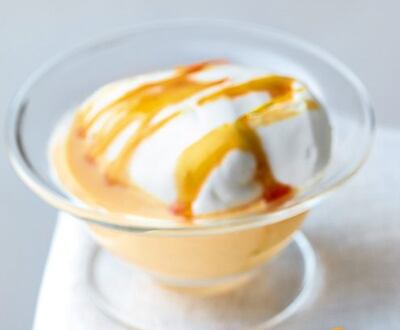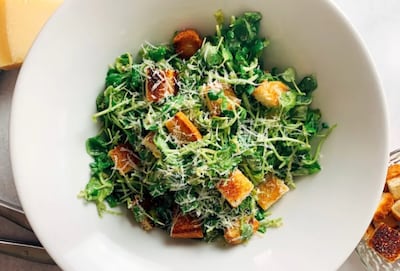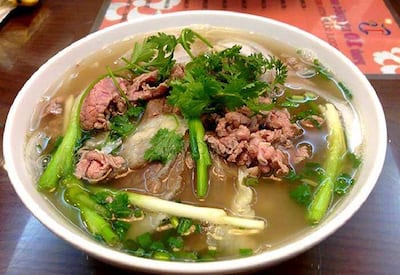Maeve O’Donovan has lived in many countries – including Côte d’Ivoire (Ivory Coast), Venezuela, Vietnam and Spain. Here, during Food Month in The Irish Times, she details some of the favourite dishes she’s encountered along her worldwide journey.
In 1992 my husband was offered a position in Ivory Coast, West Africa. Previous to that, my studies and work had taken me to France, Belgium, Spain and Britain, so Africa was a whole new adventure.
We were posted to (the economic capital and largest city) Abidjan, my husband was working for an energy company and I was offered a job with the US embassy.

To complete our new life, we hired a cook/housekeeper. His name was Dominique and he hailed from Benin, was French-speaking and had moved to the Ivory Coast during the boom years of the 1970s and 1980s, like many other West African migrants from neighbouring Togo, Niger or Ghana. Dominique was a tall imposing man who cleaned and dusted silently and then turned his skills to the kitchen, where he was most happy.
His first dessert for us was a dessert challenge, îles flottantes – floating island, meringue floating on crème anglaise. Dominique certainly did well there. My parents raved about his blanquette de veau (French veal stew), his rendition of any French or Irish dish was perfection. His local specialty dishes, such as grouper wrapped in banana leaves, were a sublime concoction.
For dinner parties, we would cook together, planning menus, preparing and tasting until we agreed the seasoning was just right. I remember preparing an Irish stew for a St Patrick’s celebration using the Darina Allen recipe. Dominique was dispatched off to find some lamb. Alas, all he found was goat, but we both agreed the flavour was just as good and happily so did our guests.
Once the kids came along, Dominique began to make vegetable purées, soups, fruit compotes and through his recommendation, helped me find a nanny – Pulcherie, who also came from Benin.
Together they played, cooked and took care of our children during the years we lived there. It was so sad and so hard saying goodbye to them when our move to Caracas, Venezuela was announced in 1997. I felt I was saying goodbye to my own parents, so much had they featured in the life of our family as we grew from a couple to a family with two kids.
On to Caracas and once settled in a new house, luck fell on us again with Piedad, our cook who was assisted by Lennys, Doralys or Oveida depending on the year in question.

Piedad was Colombian, but had worked for many years in Venezuela. From having enjoyed a variety of French Ivorian dishes in Abidjan, the kids tentatively embraced the new cuisine, eating arepas (a fried cornmeal bread) sometimes stuffed with carne mechada (pulled beef) or a variety of soft fresh cheeses – Guayanés, Paisa and Parmezulia.
The kids grew to love the dish asado negro (slow cooked beef braised in a mixture of burnt palm sugar and Worcester sauce with fried red peppers and onions), cachapas – a pancake made with liquidised fresh corn kernels filled with queso guyanese, as well as frijoles (black beans). These dishes are represented in the national dish, Pabellon Criollo.

Most of the desserts in Venezuela featured sweetened condensed milk: arroz con leche (creamed rice), tres leches (three types of milk cake) and my favourite mousse de parchita (with passion fruit juice and meringue).
With the house and biggish garden, we were able to have large get-togethers (which included a great-grandmother, people’s aunts, uncles, cousins and anyone else). They would bring a variety of traditional salads and desserts to accompany the meat.
As the meat in Venezuela was mouth-wateringly good - our particular favourite for barbequing was the punta trasera (top sirloin cap) which was barbequed whole and then sliced for serving.

The Maute Grill in Caracas was famous for this cut of meat barbequed close to the diners in an open courtyard and accompanied by guasacaca sauce, a caesar de berros (Caesar salad of watercress – the traditional dressing including anchovies which is prepared in front of you), arepitas and tajadas (sliced fried plaintain). And to top it off, a sangria made with red wine and golden Venezuelan rum.
I still dream about those lunches.
Sadly, while we became more accustomed to life in Venezuela, the political situation continued to deteriorate. Months of protest and demonstrations followed the 1998 election and subsequent tinkering of the constitution. The national oil company PDVSA went on strike and nightly protests in the form of a ‘cacerolazos’ were called for.
My mother, who had come for an extended holiday, and I stood in the garden banging our pots and pans along with our neighbours. After months of uncertainty, some 18,000 oil workers were fired, crippling the economy.
Tens of thousands left Venezuela for various other oil hubs (Houston, Calgary, the Middle East) and food began to become less plentiful. Alas, given the ongoing situation and with very heavy hearts and many tears, we bid goodbye to a place we had grown to call home for over eight years.
Following a brief two years in Ghana, we were on the move again, this time to Hanoi, Vietnam in 2007.
By this time we were a family of five.

Once settled in the suburb of Tay Ho in a house built along the lines of the old French colonial villas in Hanoi, our new team of Ms Van, our housekeeper, and Mrs Phuong Anh, our cook, shaped our lives in a predictably Asian fashion.
As the kids were older on this move, it took less encouragement and coaxing for them to try all the local specialities. Phuong Anh was proud to produce the regional highlights and national dishes (Phở Bò and phở gà – beef and chicken noodle soup with fresh herbs, some of which, like root coriander, I had never tasted before.)
Bún chả (barbequed pork belly strips and meatballs in a cold soup with rice noodles and herbs), bun bo nam bo (minced beef and pork with fresh herbs and noodles, my xao – stir-fried noodles, nem (both fresh and fried spring rolls), rau muống – morning glory, dậu sốt cà chua fried tofu in tomato sauce and an endless variety of salads with sweet fish sauce dressing and peanuts. I could go on and on.
Vietnam was fascinating, beautiful, and surprising and we quickly adapted to our new life, culture and way of living while trying to come to grips with a new and complicated language with six tones.
Overall I lived in Vietnam for 15 years (with a short move to Malaysia halfway through that time). The last two years in Vietnam saw the borders closed due to Covid and the possibility to travel out curtailed. There was no possibility of getting back in.
Having returned to full-time employment in 2013 and with the three children all working or studying in Europe, I finally felt the pull to be closer to my roots, my kids and my Irish family.
In 2022, I moved back to Europe and my now ex-husband chose to remain in Vietnam. Having had cooks and food provided to me for the past 30 years, it my turn to put my world experiences to use and see what I can come up with by myself.
- Maeve O’Donovan is from Clondalkin, Co Dublin. She left Ireland in 1985 and now lives in Barcelona. She works for the United Nations International School Hanoi, and previously she has worked in marketing and communications
- If you live overseas and would like to share your experience with Irish Times Abroad, email abroad@irishtimes.com with a little information about you and what you do









